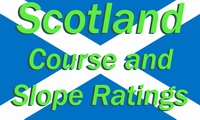|
HANDICAP GURU: Canada Adopts USGA's Stroke Control
As of March 1, Golf Canada has adopted the USGA’s Equitable Stroke Control procedure. ESC is the downward adjustment of individual hole scores to make handicaps more representative of a player’s potential ability. For example, a player with a course handicap of 9 or lower can post no more than a double bogey on any hole. A player with a course handicap of 10-19 can post no more than a 7. The maximum score increases as the handicap increases.
It’s a great move to provide harmony among golfers’ handicaps in the United States and Canada, but I wish the USGA would adopt the net-double-bogey limit used in much of the world.
In that system, a golfer with a course handicap of 12 could take no more than a 7 on a par 4 that is rated the 12th-toughest hole on the course (add two strokes plus one handicap stroke to the hole’s par). A golfer with an 11-handicap, however, could take only a 6 (two strokes but zero handicap strokes). This formula helps create more accurate Handicap Indexes and speeds up play.
By DEAN KNUTH, Golf Digest Contributing Editor. Knuth, the former senior director of the USGA handicap department, invented today's Course Rating and Slope system.
From Golf Digest April 2012, page 68
|


